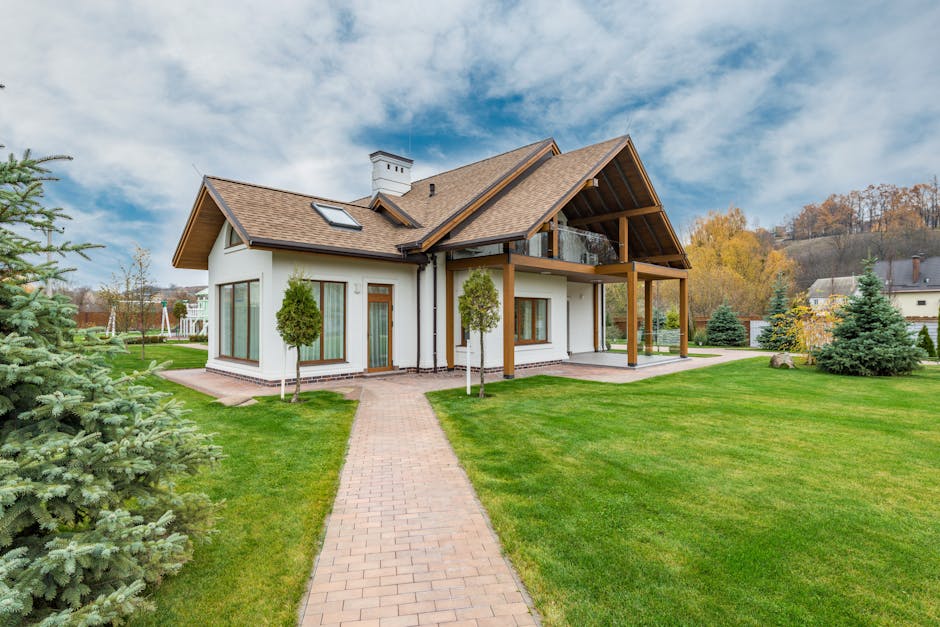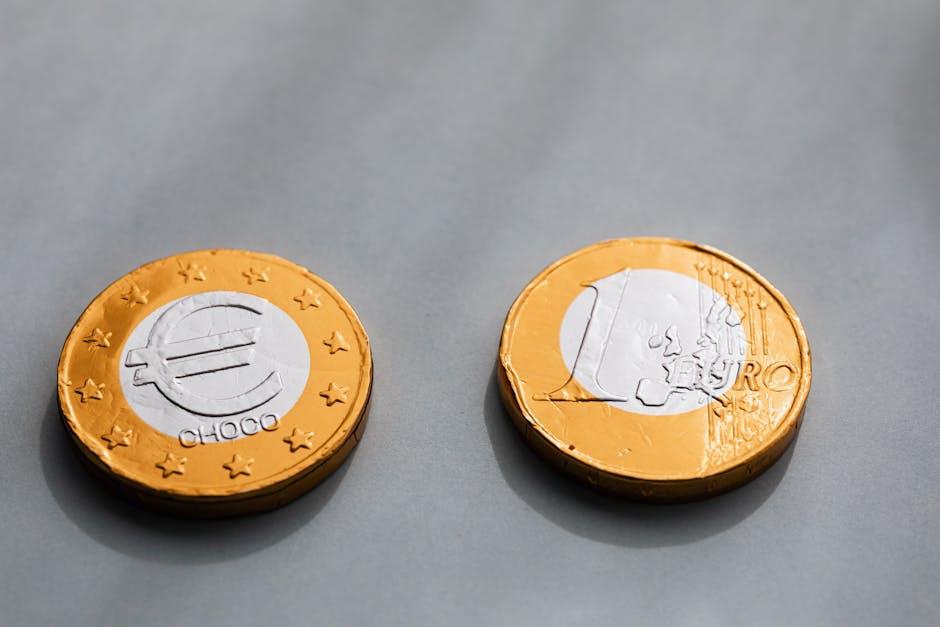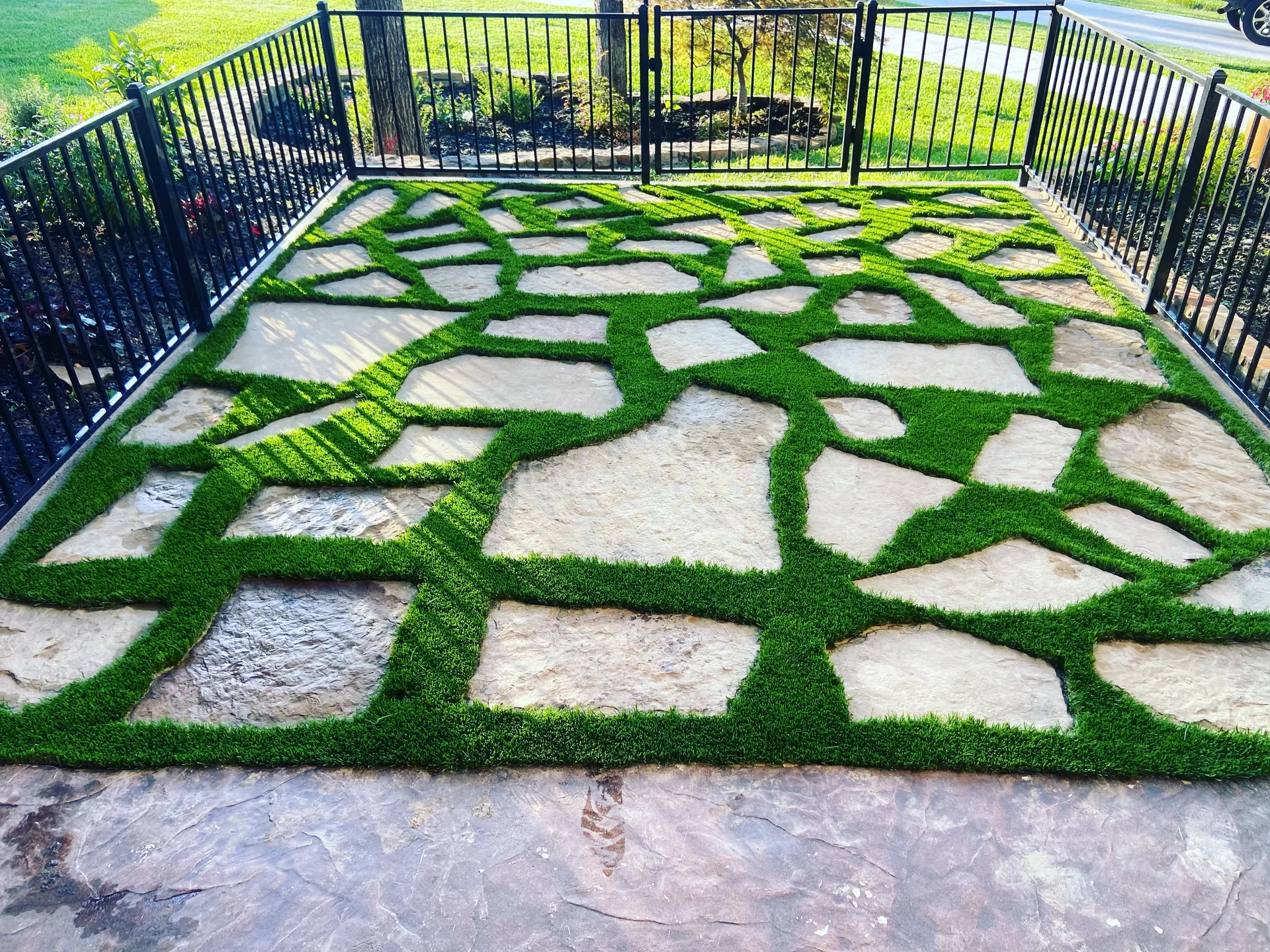
- Introduction to Residential Landscaping: A Historical Perspective
- The Rise of Modern Turf Design
- Innovations in Turf Technology and Materials
- Sustainable Landscaping: Eco-friendly Practices and Benefits
- The Role of Smart Irrigation Systems in Modern Landscaping
- Design Trends: Blending Aesthetics with Functionality
- The Economic Impact of Modern Turf on Property Value
- Future Trends in Residential Landscaping
Introduction to Residential Landscaping: A Historical Perspective
The evolution of residential landscaping reflects broader societal changes, technological advancements, and shifting cultural preferences. Historically, residential landscapes in many parts of the world were utilitarian spaces, often serving as kitchen gardens and sites for livestock rather than areas for leisure and aesthetics.
In ancient civilizations, landscaping efforts were typically reserved for the wealthy elite. For instance, gardens in Ancient Egypt and Mesopotamia were elaborate and symbolic, often reflecting religious beliefs and social status. The Persian gardens, famed for their structure and beauty, aimed to emulate paradise on earth, blending utility with aesthetic pleasure.
In Europe during the Middle Ages, the concept of residential landscaping was largely utilitarian. Gardens were primarily used for growing food, medicinal herbs, and occasionally flowers. It wasn’t until the Renaissance period that the idea of ornamental gardens took hold among the affluent, with designs focused on symmetry, perspective, and the incorporation of classical elements.
The 18th and 19th centuries saw the rise of the landscaped estate in England, popularized by landscape architects like Capability Brown. This period introduced sweeping lawns, carefully curated plantings, and the creation of picturesque landscapes that mimicked natural vistas.
As urbanization increased during the Industrial Revolution, smaller residential lots became more common, particularly in rapidly growing cities. The need for functional outdoor spaces shifted, and private gardens became more focused on personal recreation and family activities. This trend continued into the 20th century, with the post-war suburban boom in the United States and other developed countries leading to the widespread adoption of the manicured lawn as a symbol of prosperity and stability.
Post-World War II, the suburban ideal emerged vividly in places like the United States. Homeowners began emphasizing lush, green lawns as a standard feature of residential properties, representing both status and the burgeoning middle class lifestyle. This period also saw the rise of the “backyard” as a private retreat for relaxation, gatherings, and recreation.
Today, residential landscaping continues to evolve, influenced by factors such as environmental sustainability, technological innovation, and changing aesthetic preferences. Modern landscaping practices prioritize functional design, water conservation, and sustainable materials. Below is a brief comparison of traditional and modern landscaping elements:
| Traditional Landscaping | Modern Landscaping |
|---|---|
| High-maintenance lawns | Drought-resistant plants |
| Ornamental plants | Edible gardens |
| Fixed elements like fountains | Flexible spaces for multipurpose use |
The Rise of Modern Turf Design
Modern turf design has gained significant attention in recent years, reshaping the landscapes of residential areas. Unlike traditional lawns, which emphasize vast stretches of grass, modern turf embraces a variety of materials, techniques, and aesthetic principles aimed at achieving both beauty and utility.
One of the main factors contributing to the rise of modern turf design is the increased awareness of environmental concerns and the need for water-efficient solutions. In regions prone to drought, homeowners and landscapers are turning to xeriscaping—a method that focuses on low-water-use plants—to reduce water consumption. This trend aligns with the broader movement towards sustainable living and environmental stewardship.
Additionally, advancements in turf technology have made synthetic grass a popular alternative to natural grass. Companies such as FieldTurf and SYNLawn have developed artificial turfs that mimic the look and feel of natural grass while offering benefits like lower maintenance requirements and long-term durability. These synthetic options are particularly appealing in urban settings, where space and resources may be limited.
Another factor driving the popularity of modern turf design is the increasing focus on multifunctional outdoor spaces. Modern lawns are no longer just for mowing; they are being designed to serve as extensions of the home, providing areas for recreation, social gatherings, and relaxation. Features such as outdoor kitchens, fire pits, and seating areas are becoming common components of residential landscapes, integrating seamlessly with turf areas to create cohesive and functional outdoor living environments.
The use of ornamental grasses and native plants has also become a hallmark of modern turf design. Species such as Miscanthus, Panicum, and Carex add texture, movement, and visual interest, contributing to a more dynamic and ecologically balanced landscape. These plants often require less water and maintenance compared to traditional turf grasses, further supporting environmental sustainability.
Incorporating hardscaping elements—such as stone pathways, gravel beds, and retaining walls—enhances both the aesthetics and functionality of modern lawns. These features provide structure and contrast while helping to manage erosion and improve drainage. The integration of hardscaping with soft landscaping (plants and turf) allows for diverse design possibilities, accommodating various tastes and lifestyle needs.
Overall, the rise of modern turf design reflects a shift towards more sustainable, versatile, and aesthetically pleasing residential landscapes. Homeowners are increasingly opting for solutions that offer practical benefits while aligning with contemporary design trends and environmental considerations. As this movement gains momentum, it is likely to continue shaping the future of residential landscaping in significant ways.
Innovations in Turf Technology and Materials
The advancements in turf technology and materials over recent decades have significantly altered the landscape of residential gardening. These innovations not only enhance the aesthetics but also contribute to the functionality and sustainability of backyards.
Artificial Turf Advancements
Artificial turf has experienced considerable improvements since its initial introduction in the 1960s. Early versions had a synthetic, unappealing look and often led to drainage problems. However, modern artificial turf technology employs advanced materials that closely mimic the look and feel of natural grass while addressing earlier issues such as water drainage and heat retention.
One significant innovation is the use of polyethylene, a material that is softer and less abrasive than its predecessors, making it more suitable for residential use. Additionally, modern artificial turfs incorporate infill materials and drainage systems that facilitate better water dispersion and lower temperatures.
Hybrid Turf Systems
Hybrid turf systems, which combine natural grass with synthetic fibers, have also gained popularity. This technology enhances the durability and wear tolerance of natural grass while maintaining its natural appearance. Hybrid systems are particularly beneficial for high-traffic areas, where pure natural grass might deteriorate quickly.
Bio-based and Recyclable Materials
Environmental sustainability in turf design is advancing through the development of bio-based and recyclable turfs. Materials such as polylactic acid (PLA) derived from renewable resources like corn starch offer an eco-friendly alternative to traditional petroleum-based products. These bio-based turfs reduce the carbon footprint associated with production and disposal.
Additionally, manufacturers are increasingly focusing on recyclability. Some companies produce artificial turf that can be recycled at the end of its life cycle, contributing to a circular economy. This effort minimizes landfill waste and fosters sustainable landscaping practices.
Technological Integration
Integrating technology into turf maintenance has also revolutionized residential landscaping. The use of sensors and automated systems can optimize lawn care. For instance, sensors can monitor soil moisture levels and weather conditions to adjust irrigation schedules automatically, conserving water and ensuring optimal grass health.
Comparison of Turf Technologies
| Technology | Benefits |
|---|---|
| Artificial Turf | Low maintenance, drought-resistant, reduced allergen |
| Hybrid Turf | Durable, natural appearance, suitable for high-traffic areas |
| Bio-based Turf | Eco-friendly, reduced carbon footprint, recyclable |
The evolution of turf technologies plays a pivotal role in the transformation of residential landscaping. By adopting these innovations, homeowners can achieve aesthetically pleasing, functional, and sustainable backyard environments that cater to modern lifestyle needs.
Sustainable Landscaping: Eco-friendly Practices and Benefits
As environmental concerns continue to grow, sustainable landscaping practices have become increasingly important in residential areas. Homeowners are seeking ways to reduce their environmental footprint while still maintaining an aesthetically pleasing outdoor space. Sustainable landscaping not only benefits the environment but also offers various practical advantages.
One key aspect of sustainable landscaping is water conservation. Traditional lawns require significant amounts of water, often leading to wastage and increased water bills. Modern turf designs incorporate drought-resistant grass species and native plants that require less water. Moreover, advancements in irrigation technology, such as drip irrigation and smart irrigation systems, help minimize water usage by delivering water directly to the roots and adjusting irrigation schedules based on weather conditions.
Another important practice in eco-friendly landscaping is the use of organic and locally-sourced materials. Conventional lawn care often relies on synthetic fertilizers and pesticides, which can have detrimental effects on the environment. Sustainable approaches prioritize organic fertilizers and pest control methods to reduce chemical runoff and promote healthier soil ecosystems. Using locally-sourced materials for paths, patios, and other landscaping features helps reduce carbon emissions associated with transportation.
Composting is an effective method to manage yard waste and create nutrient-rich soil. Instead of sending grass clippings and fallen leaves to landfills, homeowners can compost these materials to enrich their gardens. Composting helps reduce the waste stream and lowers methane emissions from landfills, contributing to a healthier environment.
Rainwater harvesting is another sustainable practice gaining traction in residential landscaping. By collecting and storing rainwater, homeowners can reduce their dependence on municipal water supplies for irrigation. Rain barrels and cisterns can capture significant amounts of water during rainy seasons, which can be used to water lawns and gardens during dry periods.
In addition to environmental benefits, sustainable landscaping can enhance biodiversity. Incorporating a variety of plants, including native species, creates habitats for local wildlife, such as birds, butterflies, and pollinators. This not only supports ecosystem health but also adds vibrancy and interest to residential landscapes.
The benefits of sustainable landscaping extend beyond environmental impacts. By reducing resource consumption and maintenance requirements, homeowners can achieve long-term cost savings. Lower water bills, reduced need for fertilizers and pesticides, and less frequent lawn mowing can all contribute to financial savings over time.
Overall, sustainable landscaping practices offer a comprehensive approach to modern turf design that balances aesthetics, functionality, and environmental stewardship. By adopting these eco-friendly practices, homeowners can create beautiful, functional, and sustainable outdoor spaces that contribute positively to their communities and the planet.
The Role of Smart Irrigation Systems in Modern Landscaping
In the realm of modern residential landscaping, smart irrigation systems have emerged as indispensable tools. These systems offer precision, convenience, and sustainability, which cater to homeowners’ needs for efficient water use and optimal plant health. While traditional irrigation methods often rely on manual control and fixed schedules, smart irrigation systems leverage technology to adapt to environmental conditions and plant needs in real-time.
The Technology Behind Smart Irrigation
Smart irrigation systems utilize a range of technologies to manage water use effectively. Key components include:
- Weather-Based Controllers: These systems use local weather data to adjust watering schedules. If rain is expected, the system can delay irrigation, thereby conserving water.
- Soil Moisture Sensors: These sensors measure the moisture level in the soil, providing data to ensure that plants receive the right amount of water without over or under-watering.
- Evapotranspiration (ET) Controllers: ET controllers calculate the evaporative loss and plant transpiration, adjusting irrigation schedules to replace only the lost water.
- Smartphone Integration: Many smart irrigation systems can be controlled via smartphone apps, offering remote access and detailed water usage reports.
Advantages of Smart Irrigation Systems
The integration of smart irrigation systems in residential landscapes brings numerous benefits:
- Water Conservation: By using real-time data, smart systems significantly reduce water waste. According to the Environmental Protection Agency (EPA), households using smart irrigation systems can save up to 15,000 gallons of water annually.
- Cost Savings: Reduced water usage translates to lower utility bills. Furthermore, many municipalities offer rebates for the installation of water-efficient irrigation systems.
- Enhanced Plant Health: Proper water management ensures plants receive the right amount of water, promoting healthier growth and reducing the risk of disease.
- Convenience: Automation and remote control options provide homeowners with ease of use and flexibility, allowing adjustments to be made at any time from anywhere.
Real-World Impact
The effectiveness of smart irrigation systems is supported by data from various studies and implementations:
| Study/Implementation | Results |
|---|---|
| Southern Nevada Water Authority | Achieved up to 20% water savings in pilot programs using smart controllers. |
| University of California, Davis | Reported up to 30% water savings with weather-based irrigation controllers in residential settings. |
Challenges and Considerations
While smart irrigation systems offer considerable advantages, there are also some challenges and considerations:
- Initial Cost: The upfront cost of installing a smart irrigation system can be higher compared to traditional systems. However, long-term savings in water bills often offset this expense.
- Technical Issues: As with any technology, there can be issues with connectivity or sensor accuracy. Regular maintenance and updates are essential to keep systems functioning optimally.
- User Knowledge: Homeowners must familiarize themselves with the system’s functionality to fully utilize its features and ensure proper setup.
Conclusion
Smart irrigation systems represent a significant advancement in residential landscaping, combining technology and environmental sensitivity to optimize water use and promote sustainable practices. As these systems become more affordable and accessible, their adoption is likely to expand, bringing further improvements to backyard aesthetics and functionality.
Design Trends: Blending Aesthetics with Functionality
In recent years, residential landscaping has witnessed significant transformations, with a growing emphasis on integrating aesthetics with functionality. Modern turf design has played a pivotal role in this evolution, ushering in innovative approaches that cater to both visual appeal and practical use.
Minimalist and Geometric Designs
Minimalist landscaping, characterized by clean lines and simple plantings, focuses on creating uncluttered, elegant spaces. Geometric designs, which incorporate patterns and shapes, offer a contemporary feel, aligning well with the architectural styles of modern homes. These approaches emphasize low-maintenance and easy-care landscapes, which are becoming increasingly popular among homeowners.
- Utilization of straight paths and geometric plots
- Incorporation of neutral colors and natural materials
- Emphasis on balance and symmetry
Multi-functional Spaces
The modern residential landscape serves multiple purposes beyond aesthetic appeal. Homeowners are prioritizing the creation of spaces that facilitate outdoor activities and social gatherings. Features like outdoor kitchens, fire pits, and seating areas are integrated into the lawn design, making backyards extension of the living abode.
- Installation of outdoor kitchens for cooking and dining
- Creation of fire pits and seating areas for relaxation
- Designated zones for children’s play areas and gardens
Native and Drought-tolerant Plants
Incorporating native and drought-tolerant plants into turf design has become a prominent trend. These plants are adapted to local climates, require less water, and are less susceptible to pests. This not only reduces maintenance efforts but also promotes biodiversity and environmental sustainability.
- Use of local plant species that thrive in the region
- Integration of drought-resistant varieties to conserve water
- Promotion of natural habitats for local wildlife
Seamless Indoor-Outdoor Transition
Modern turf designs aim to create a seamless flow between indoor and outdoor spaces. Large windows, sliding doors, and similar flooring materials are employed to blur the lines between the interiors and exteriors, fostering a cohesive environment that enhances the sense of space.
- Installation of expansive glass doors and windows
- Use of similar materials and colors for indoor and outdoor flooring
- Conception of patio areas that mirror indoor design elements
Technological Integration
Technology plays a crucial role in modern landscaping. Automated irrigation systems, smart lighting, and garden monitoring devices ensure that landscapes are well-maintained with minimal effort. These integrations enhance the functionality and sustainability of residential yards.
- Smart irrigation systems for efficient water usage
- Ambient and automated lighting for aesthetic and security purposes
- Soil sensors and garden monitoring tools for plant health
By combining design innovation with functionality, modern turf design continues to redefine the landscaping of residential spaces. The focus on minimalism, multi-functionality, ecological sustainability, and technological advancements promises to shape the future of residential landscaping, providing homeowners with both beautiful and practical outdoor areas.
The Economic Impact of Modern Turf on Property Value
The economic impact of modern turf on property value is increasingly significant in today’s real estate market. Well-designed landscaping, including the integration of modern turf, can greatly enhance the aesthetic appeal and functional utility of a property, thereby increasing its market value.
Studies and Market Analysis
Numerous studies have demonstrated a direct correlation between quality landscaping and increased property value. According to the National Association of Realtors, well-landscaped homes can achieve a price advantage of 5% to 12% over comparable properties without such landscaping. Additionally, a study by Michigan State University found that landscape investments, particularly high-quality modern turf, have a recovery value of 100% to 200% at the time of sale.
Cost vs. Value
Investments in modern turf and landscaping can be assessed considering both initial costs and long-term benefits. Although the initial investment may be significant, the following table highlights typical costs and the estimated increase in property value:
| Landscaping Element | Typical Cost (USD) | Estimated Increase in Property Value (USD) |
|---|---|---|
| Modern Turf Installation | $2,000 – $5,000 | $10,000 – $15,000 |
| Smart Irrigation Systems | $1,000 – $3,000 | $8,000 – $12,000 |
As shown, the return on investment for modern turf and smart irrigation systems can be substantial, often exceeding the initial costs by a significant margin.
Market Preferences
Consumer preferences also play a pivotal role in the economic impact of landscaping. Buyers often perceive professionally landscaped properties as better maintained and more appealing, which can lead to faster sales and higher bids. Real estate experts consistently report that homes with attractive outdoor spaces tend to sell more quickly and at higher prices than those lacking such features.
Maintenance and Long-Term Value
Beyond mere installation, the maintenance of modern turf also impacts property value. Sustained upkeep ensures the landscape remains visually appealing and functional. Studies have indicated that regularly maintained landscaping can retain its value for years, contributing to overall property appreciation.
In summary, the integration of modern turf in residential landscaping is more than an aesthetic choice; it is a strategic investment with substantial economic benefits. By understanding the cost implications, market preferences, and long-term value, homeowners can make informed decisions that enhance both the beauty and value of their properties.
Future Trends in Residential Landscaping
The future of residential landscaping is poised to undergo significant transformations, driven by emerging technologies, changing consumer preferences, and increased environmental awareness. Several key trends are expected to shape the future of modern turf design and backyard aesthetics.
Firstly, the use of artificial intelligence (AI) and machine learning is anticipated to revolutionize landscaping. These technologies can analyze data from various sensors and environmental conditions to optimize lawn maintenance. For example, AI-powered systems can provide precise watering schedules and tailor fertilization plans to the specific needs of different turf areas.
Another major trend is the growing popularity of native and drought-resistant plant species. As water scarcity becomes a more pressing issue, homeowners are increasingly turning to plants that require less water and are better suited to local climate conditions. This not only conserves water but also reduces the need for chemical fertilizers and pesticides.
There has been a significant shift towards eco-friendly landscaping practices. The use of organic fertilizers, composting, and integrated pest management systems are gaining traction as homeowners seek to minimize their environmental footprint. Additionally, permeable paving materials and rain gardens are being integrated into landscape designs to facilitate better stormwater management and reduce runoff.
Another emerging trend is the incorporation of multifunctional outdoor spaces. Homeowners are increasingly looking to create spaces that offer more than just aesthetic appeal. Functional areas such as outdoor kitchens, fire pits, and recreational spaces are becoming integral components of modern backyard designs. These spaces not only enhance the utility of the landscape but also provide areas for socializing and relaxation.
Technological advancements in robotic lawn care are also expected to play a significant role in the future of residential landscaping. Robotic lawn mowers, which are already on the market, are becoming more advanced and accessible. These machines can autonomously mow lawns, reducing the time and effort required for lawn maintenance and ensuring consistent turf health.
Furthermore, renewable energy solutions are making their way into landscaping. Solar-powered garden lights, water features, and even lawn mowers are not only cost-effective but also reduce the carbon footprint of maintaining a landscape. This trend reflects a broader move towards sustainability in all aspects of homeownership and property management.
Lastly, the concept of biophilic design is gaining prominence. This approach emphasizes the integration of natural elements into urban and suburban environments. By incorporating features such as green roofs, living walls, and diverse plantings, biophilic design aims to enhance the connection between homeowners and the natural world, promoting well-being and biodiversity.
In conclusion, the future of residential landscaping is set to be characterized by innovation, sustainability, and multifunctionality. By embracing these trends, homeowners can create outdoor spaces that are not only beautiful and functional but also environmentally responsible.



